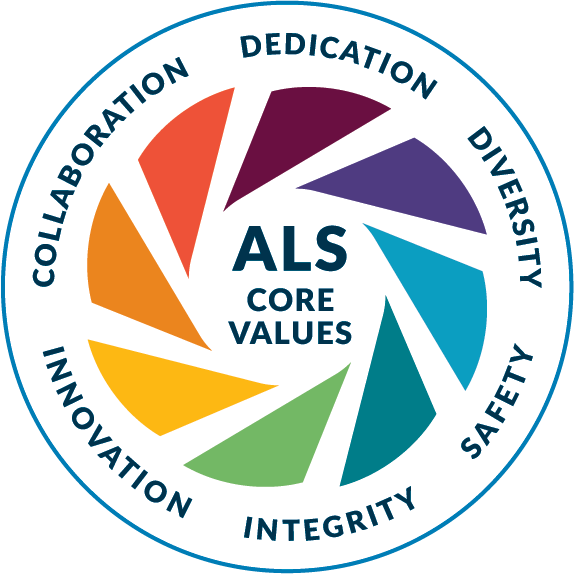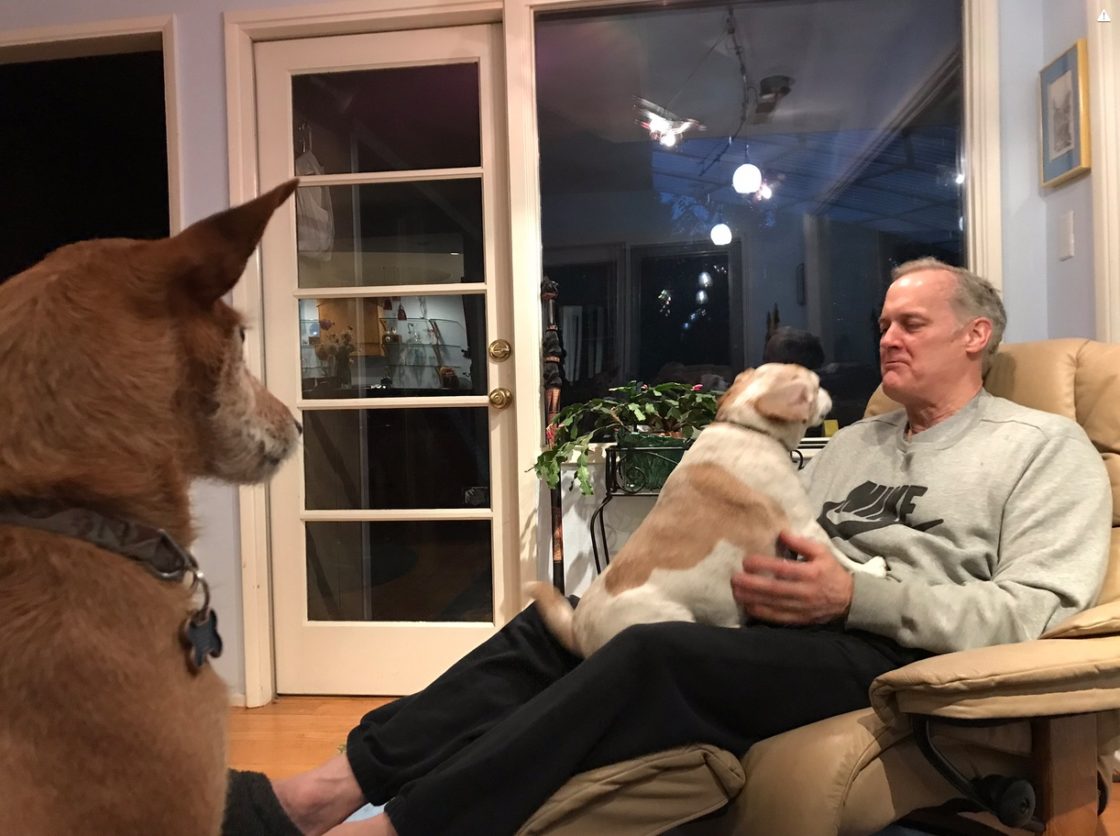
I left my office to travel home to Eugene, Oregon, for the weekend on March 13, 2020 (Friday the 13th), figuring I would, as usual, return to Berkeley early the following Monday. I’ve been in Eugene ever since, participating in endless Zoom calls and trying to avoid tripping over two old dogs following me around all day, no doubt wondering why I’m around so much. My wife and I have never competed for Internet bandwidth like this before. I miss the daily impromptu interactions at the ALS, where we can share similar stories in person.
Let me cheer things up a bit by turning to several bits of good news. First, you may have heard that the ALS Upgrade (ALS-U) Project went through a critical decision (CD)-2 review last November, and it went very well. We are expecting positive news in the next few months. This was an important review since it will set the project scope, budget profile, and schedule. As I have written before, the ALS-U construction project is a key enabler of a very bright ALS future. Among other things, it will place measurement of nanoscale structure and nanoscale motion on the same footing, which is critical to understanding and designing new material and chemical systems to address many challenges facing society today.

In more good news, Building 7, the old structure just northeast of the ALS that housed shipping and receiving services and some offices, is gone. Demolition was done over the Thanksgiving holiday, and I’m sure will be vigorously celebrated by many generations of students and postdocs who had offices there. That was the last of the “Old Town” buildings to be demolished, and the site is now ready for redevelopment. The Energy Sciences Area, of which the ALS is a part, has initiated a Lab-wide effort to envision an integrated, state-of-the-art cluster of new multidisciplinary research buildings on the Old Town footprint, now known as “Charter Hill.” The ALS and its community would be strongly connected to these buildings, both physically and conceptually. Among other things, Charter Hill would also link the ALS even more strongly to the Molecular Foundry, which would be a major benefit to both user communities.
In some sense, Charter Hill planning is part of our effort to think about the “New ALS,” a concept which describes ALS capabilities after the upgrade is complete. We have continued active planning of different aspects of the New ALS during the pandemic: ALS- and ALS-U-developed beamlines and endstations, Charter Hill, the bourgeoning demand for managing and rapidly processing user data, and developing protocols for remote access and remote operation. Users have been involved in some of this, and I encourage you to get involved if you are interested in helping us build our future. The outcomes of much of this planning are discussed in the ALS Strategic Plan, which is updated annually at the beginning of October and is available on the ALS web site.
 In other news of renewal, last week the ALS announced a refreshed mission statement and new set of core values that reflect our culture and priorities. The effort to develop these was initiated and led by our IDEA Committee over the last year and was highly collaborative, involving multiple rounds of input and feedback from our community via surveys and a brainstorming event. The mission and core values will guide our strategy and practices and shape our working environment and culture for staff, users, and other visitors who are part of our community.
In other news of renewal, last week the ALS announced a refreshed mission statement and new set of core values that reflect our culture and priorities. The effort to develop these was initiated and led by our IDEA Committee over the last year and was highly collaborative, involving multiple rounds of input and feedback from our community via surveys and a brainstorming event. The mission and core values will guide our strategy and practices and shape our working environment and culture for staff, users, and other visitors who are part of our community.
I would be remiss if I didn’t mention the wonderful news about Jennifer Doudna receiving the Nobel Prize in Chemistry last fall. Jennifer has been an ALS user for over 20 years, and was chair of our UEC in 2003. Most of the early structural work that confirmed how CRISPR-Cas9 splices genes was done at the ALS. We are very proud to have Jennifer in our community. The news of the Nobel Prize lifted a lot of spirits around the ALS in the midst of the pandemic. So, a hearty congratulations and a sincere thanks to Jennifer.

LBNL management has been very supportive of the ALS user program through the pandemic. The restart of research at LBNL happened when the ALS bioscience partner beamlines returned to remote operation in late March for COVID-19-related research. Some of this work was supported by the DOE Office of Science through the National Virtual Biotechnology Laboratory, a consortium of DOE national laboratories focused on the response to COVID-19, with funding provided by the CARES Act. Working under very adverse and initially uncertain conditions, the bioscience staff at the ALS produced a series of wonderful results during the shelter-in-place, initially on COVID-19 and later more broadly, using protein crystallography, solution SAXS, x-ray footprinting, and cellular nanotomography beamlines. Similar productivity was achieved by the EUV lithography beamlines, which started back up a little later.
As most of you know all too well, other ALS beamlines returned to operation more slowly, since they are generally not configured for remote operation. Since last summer, ALS beamline staff have been measuring samples sent by users, who in some cases then participate remotely. Many facilities have followed this approach, and all have determined that it does not scale well given the staffing available: a lot more effort by our staff for much lower productivity. With other BES light sources, ALS has created a remote access working group to share ideas and best practices. Early results are coming from this effort. For example, after the shutdown there will be direct and uniform access, through ALSHub, to beamline computers (sorry—only when you have beam time!). The remote access working group will continue to have modest, though important, impacts on user access through the pandemic, and their efforts will also expand the ways users access the ALS and other facilities well into the future. Some ALS beamlines will probably be upgraded for remote operation, and, more commonly on many beamlines, some members of a user group will be on site during experiments and others will participate remotely.

By now you will likely have heard about the need for longer shutdowns and the consequent decrease in user time between now and the ALS-U dark period, currently anticipated to begin in 2025. We had a user town hall to discuss this on January 26. I encourage you to review the materials from that event, which are available on the ALS web site, and to avail yourself of the other feedback and information mechanisms noted there. The ALS and ALS-U teams appreciate the disruption this will cause and are working to minimize it as much as possible. We are also thinking of ways to increase our efficiency and how to change our model a bit to serve the community through this period. We will be discussing this regularly with the Users’ Executive Committee, and I encourage you to contact them if you want to get involved.
I want to end by applauding the resiliency of staff working at the ALS over the past two years, through several wind-related power outages and large fires in the region, and, of course, the pandemic and a rather tense election season. This includes, of course, the beamline staff, who are the primary interface to the user community. Less visible but equally important is a large number of staff who keep the ALS maintained and operating smoothly and safely, as well as those in the ALS-U Project who often need to follow restrictive work rules during the pandemic. This latter group extends across about a dozen LBNL core research and operations divisions, all of which are key parts of the ALS enterprise. Working for the ALS through this period, either on site or remotely, has been stressful and lonely. Despite that, the ALS and the ALS-U Project have had a very good year, and will emerge from the pandemic ready to serve the user community and to push the frontiers of x-ray science and technology. I look forward to seeing all of you in person in 2021.
